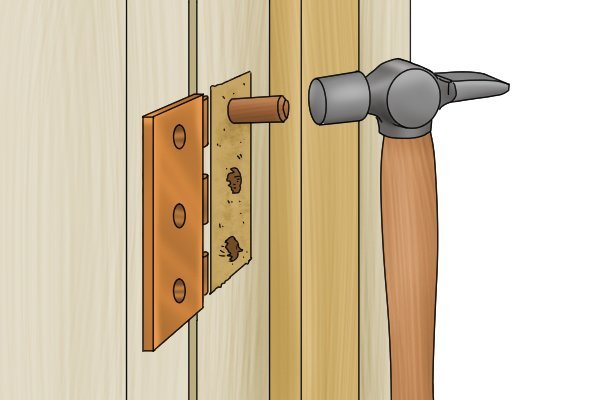
What is Wood Filler?
Wood filler is a paste-like substance that helps to repair and fill holes, cracks, and imperfections in wood. It’s commonly used in woodworking and home repairs. Here’s how it works: you apply the filler directly into the hole or crack, and once it dries, you can sand it down for a smooth finish.
There are different types of wood fillers available, from latex to epoxy-based varieties. Latex fillers are easy to work with and can be painted over easily, while epoxy fillers are more durable and ideal for larger repairs. When choosing, consider the size of the hole and the intended use. For small, cosmetic repairs, latex fillers do the job. But if you’re dealing with heavy-duty wear and tear, epoxy might be the better choice.
Here’s the thing—wood filler shrinks as it dries. So, you’ll need to apply it a bit higher than the surrounding wood and sand it down once it’s cured. This can take some trial and error, but with a little patience, you can achieve a seamless finish.
What Are Dowels?
Dowels are small, cylindrical pieces of wood used to reinforce joints and fill holes. Picture them as the structural backbone in your repair project. They’re typically inserted into a pre-drilled hole and secured in place, providing a strong anchor for screws or other fasteners.
Using dowels might sound a bit more complex than wood filler, but the process can be quite straightforward. First, you’ll need to drill a hole that matches the diameter of the dowel. This ensures a snug fit, which is crucial for strength. After that, you coat the dowel with wood glue, insert it into the hole, and let it dry.
Dowel repairs can be incredibly sturdy, making them ideal for high-use areas. They also maintain the integrity of the wood better than filler does and make it easier to reattach hardware without worrying about the hole crumbling.
When to Use Wood Filler
Choosing wood filler is often best for surface-level repairs. If you’re looking to fix cosmetic issues or are working on a project where aesthetics matter, wood filler is usually the way to go.
Here are some scenarios where wood filler shines:
- Small holes: If you have tiny screw holes from old hardware, wood filler can easily fill these without much hassle.
- Cracks and imperfections: It’s perfect for smoothing out the wood surface before painting or staining.
- Quick fixes: For a fast repair, wood filler can save you time and keep your project moving forward.
However, it’s essential to remember that wood filler isn’t always the best long-term solution. In areas subject to a lot of stress, like door hardware holes, it may not hold up against repeated use.
When to Use Dowels
Dowels come in handy when you need a more robust solution. If you’re dealing with larger holes or if the screw hole has become too loose for conventional screws, dowels will give you the support you need.
Consider using dowels in these situations:
- Large or stripped holes: If a screw hole is too big for wood filler to handle, dowels can fill the void and provide a solid anchor point for new hardware.
- Heavy-duty applications: For doors that see a lot of use, dowels can sustain regular pull or push without failing.
- Historical repairs: If you’re restoring an antique or a beloved piece of furniture, dowels preserve the original structure better than filler.
Dowels require a bit more work upfront, but their strength often pays off in the long run, especially for door hardware repairs.
Advantages of Wood Filler
Wood filler has a few significant advantages that make it a popular choice for many DIYers. Let’s break them down!
1. Ease of use: Wood filler typically requires less skill and minimal tools. You can apply it with a putty knife, making it accessible for beginners.
2. Quick drying time: Many wood fillers dry quickly, allowing you to sand and paint in a short time.
3. Versatility: Wood filler can be used on various surfaces, not just wood. You can use it on drywall, metal, and more.
While it’s great for simple repairs, remember that it may not stand the test of time in high-stress areas.
Advantages of Dowels
Dowels also come with their own set of benefits that make them worthy of consideration:
1. Strength: When properly installed, dowels can provide a strong hold, making them ideal for crucial repairs.
2. Durability: Unlike wood filler, dowels won’t shrink or crack over time. They offer a long-lasting solution for your screw hole problems.
3. Restoration-friendly: They maintain the original integrity of the wood, making them great for restoration projects.
While dowels require more effort to install than wood filler, their strength and durability are hard to beat.
Final Thoughts: Which Should You Choose?
Deciding between wood filler and dowels really comes down to your specific project and needs. If you have small holes and want a quick, easy fix, wood filler is your go-to. But if you’re dealing with larger holes or areas that see a lot of use, dowels will provide the sturdiness you need.
In the end, both methods have their place in the repair toolkit. Just remember, investing a bit more time into a dowel installation can save you from future headaches. Whether you choose wood filler or dowels, the most important thing is to tackle those screw holes head-on. Your door will thank you!